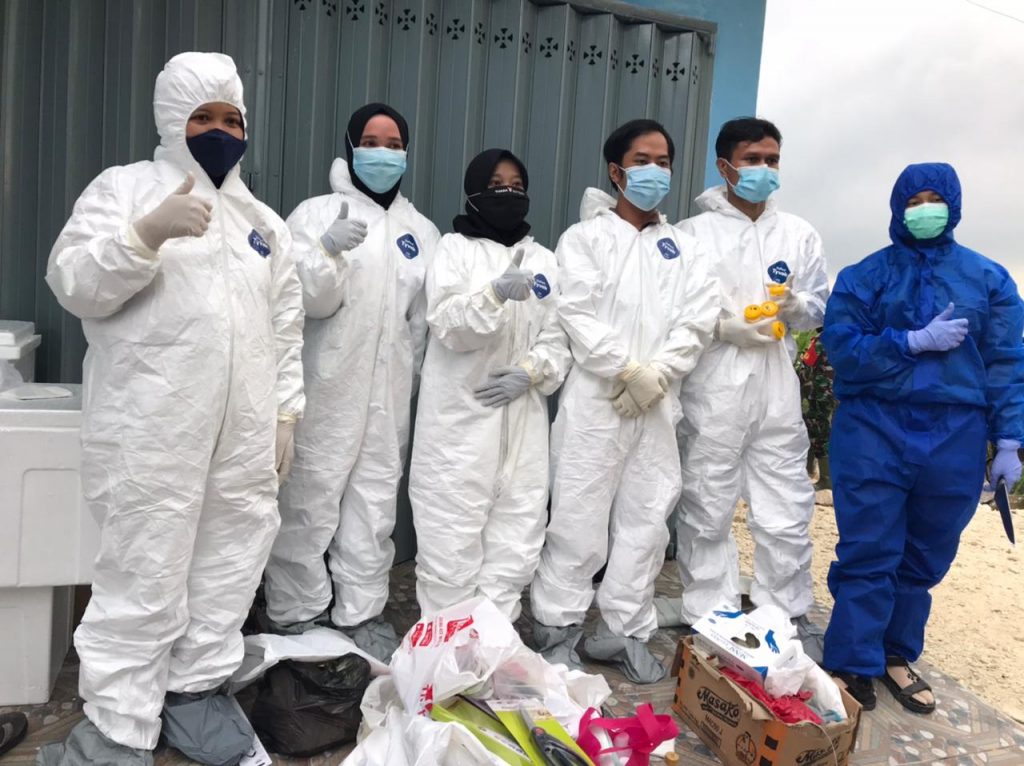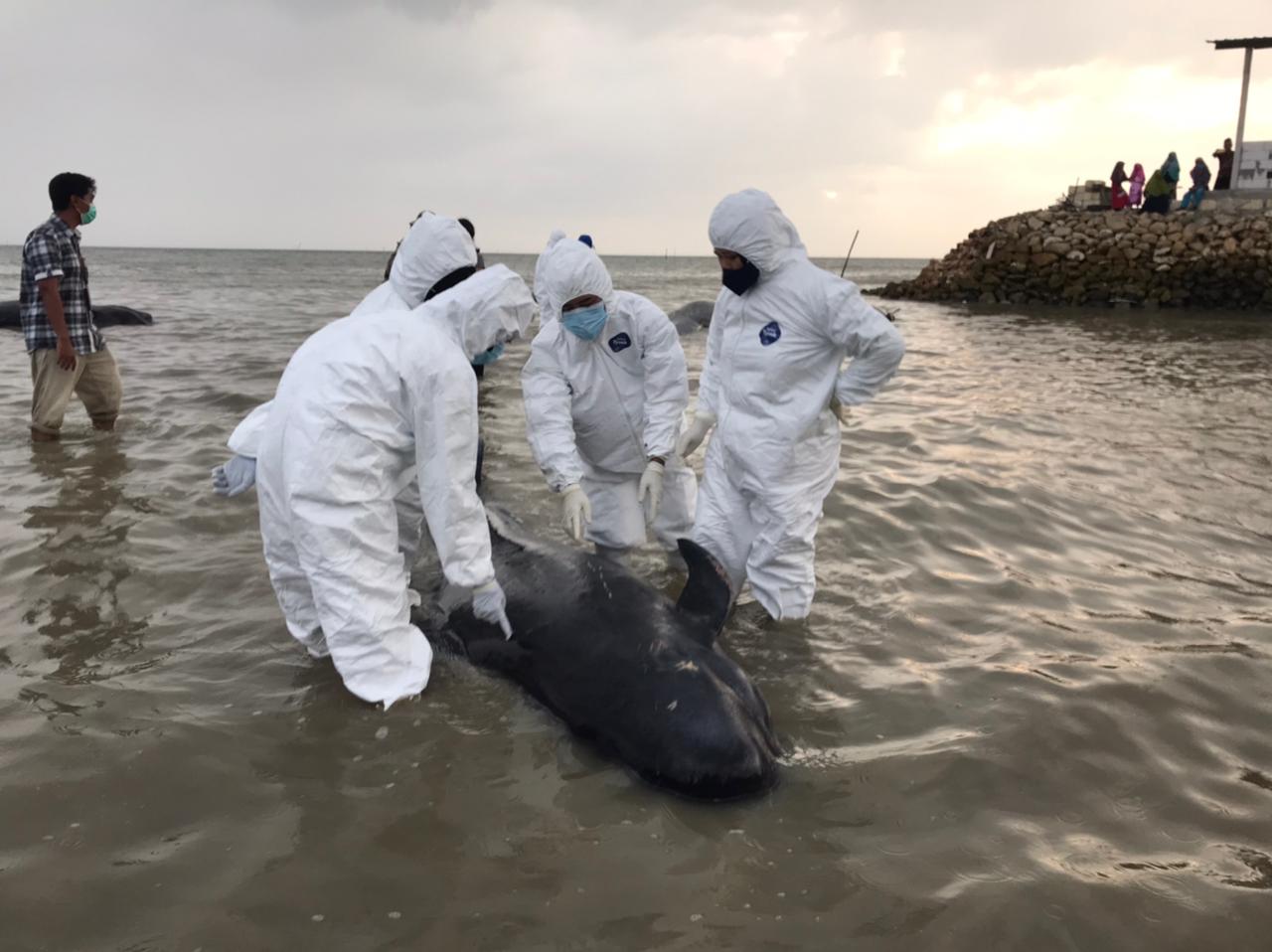UNAIR NEWS – The medical team of Faculty of Veterinary Medicine (FKH) Universitas Airlangga (UNAIR) headed to the location of the stranded whale in Modung Beach, Bangkalan, Madura on Friday, February 19, 2021. The team led by drh. Bilqisthi Ari Putra (drh. Bilqisthi) as Pathology Staff Faculty of Veterinary Medicine UNAIR and drh. Happy Ferdiansyah as Conservation Animal Researcher. The team left Surabaya at seven in the morning and arrived at ten in the site.
To UNAIR NEWS, drh. Bilqisthi explained that a total of fifty-two whales were stranded. When fishermen first discovered it, forty-nine whales had died, and three of them were alive. However, of the three who were alive, two of them died while trying to be saved, so only one was alive and was successfully returned to the sea.
“The stranded whales were the shortfin pilot whale,” he continued.
When they first arrived at the location, the team was divided into the antemortem and postmortem teams. The antemortem team focused on the whales that were still alive, rescue and monitor the health of the whales that were still alive.
The postmortem team focused on whales that are dead, identifying their gender, size, age. After identification, a selection is carried out to select the most dominant whale to be used as an autopsy material.
Not all whales can be identified because of the strong currents and water levels. Of the forty-nine whales that died, thirty-four were identified by the FKH team. Meanwhile, three of the identified whales were then subjected to an autopsy examination.
“Three whales were autopsied, two of them were male and one was female,” explained drh. Bilqisthi.
The selection of whales for autopsy is done based on size and condition. The whale selected for autopsy is the largest, assuming that the largest whale is the head of the colony with a length of five and a half meters and is male.
While the selected female whales are the largest, with a length of three and a half meters, the whales identified must not be in bad condition. It is still suitable for an autopsy.
“The autopsy can only be done at five in the afternoon with the help of security from the police, Koramil and local village officials,” he explained.
This support is in the form of security assistance and assistance in providing equipment and other necessities needed for an autopsy. The autopsy took approximately four and a half hours because it was completed at about half-past ten.

Not only doing an autopsy at the scene of the incident. The FKH team also took several samples for pathology examinations at the FKH UNAIR laboratory. The pathology examination was intended to determine the exact cause of the stranding of the fifty-two whales.
“We still can’t confirm the cause yet because when we saw that there was no sonar disturbance in the whales, we didn’t suspect volcanic activity under the sea either. So we need to study it through pathology examinations, “explained drh. Bilqisthi.
The team also considered natural factors because there had been a tornado in the Madura Strait before the incident. However, this assumption as the cause of the whale stranding is being examined through lab works.
According to drh. Bilqisthi, the short fin pilot whales, live in groups. When migrating, the group will follow the head of the colony. If the colony leader dies, it will be automatically replaced by an older male under the previous leader. However, if the colony leader is sick and has not died, the whale group will still follow the colony leader.
Apart from the medical team, six Faculty of Veterinary Medicine students volunteered to the field to help. They are Ramadhanty T, Yustisiane Ruth R, Ary Setya Hernanda, Akmal K. Ishak, Agus Arisma, and Shafira R. Ruyani.
Author: Galuh Mega Kurnia
Editor: Nuri Hermawan





